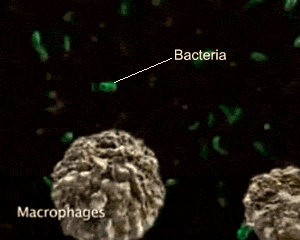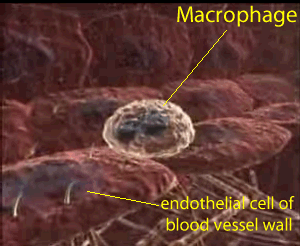Immune system
What type of defence offers the first line of protection against invading organisms?
Name the barriers that protect us.
What is the function of the skin? How does it perform this function?
What is the function of mucus? How does it perform this function?
What happens to microbes swallowed into the stomach?
Are all bacteria in our bodies dangerous? Explain
When bacteria enter the body they are met by three non-specific responses, the inflammatory response, fever and phagosytic white blood cells. Describe how each one works.
White blood cells- The hunter killers of our body
White blood cells are constantly on a seek and destroy mission in our bodies. There are many different types of white blood cells formed by the red bone marrow and have a life span ranging from 2 hours to several years. Unlike red blood cells, white blood cells often leave the blood vessels to perform their duties in varies body tissues. White blood cells move like amoeba, changing the shape of their membrane and then flowing into it as shown on the right. They engulf and digest dead cells, bacteria and other foreign matter.

